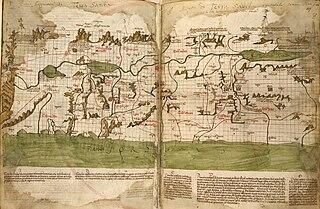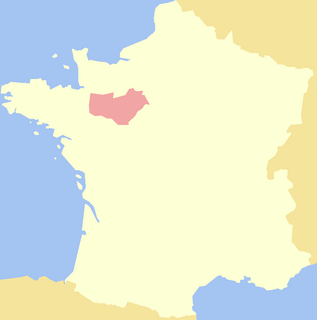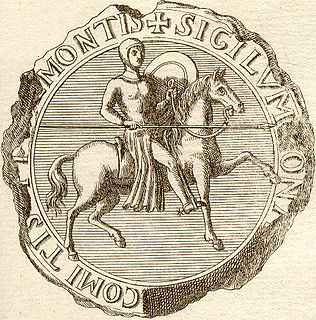Life
Budic was the son of Count Judicaël of Nantes, From 1005 to 1010, he ruled under the scrutiny of Walter II, Bishop of Nantes (1005-1041) who had been appointed by the Count of Rennes Geoffrey I of Brittany.
Judicaël of Nantes was Count of Nantes from 992 to his death in 1004.

Geoffrey I, Duke of Brittany, also known as Geoffrey of Rennes and Geoffrey Berengar, was the eldest son of Duke Conan I of Brittany. He was Count of Rennes, by right of succession. In 992 he assumed the title of Duke of Brittany, which had long been an independent state, but he had little control over much of Lower Brittany.
Budic took advantage of the Bishop's pilgrimage in the Holy Land around 1020 to seize the episcopal possession and destroy the prelate's castle. Back in Brittany, the Bishop asked for the Count of Renne's intervention while Budic asked for Count Fulk III of Anjou's assistance. This led to the loss of part of the lands held by the Counts of Nantes in the south of Loire, that is to say almost the whole Mauges, in 1025. The building of Clisson castle was the sign of the Count of Nantes' wish to stop the progression of the County of Anjou.

A pilgrimage is a journey or search of moral or spiritual significance. Typically, it is a journey to a shrine or other location of importance to a person's beliefs and faith, although sometimes it can be a metaphorical journey into someone's own beliefs.

The Holy Land is an area roughly located between the Jordan River and the Mediterranean Sea that also includes the Eastern Bank of the Jordan River. Traditionally, it is synonymous both with the biblical Land of Israel and with the region of Palestine. The term "Holy Land" usually refers to a territory roughly corresponding to the modern State of Israel, the Palestinian territories, western Jordan, and parts of southern Lebanon and of southwestern Syria. Jews, Christians, and Muslims all regard it as holy.

Fulk III, the Black was an early Count of Anjou celebrated as one of the first great builders of medieval castles. It is estimated Fulk constructed approximately 100 castles, along with abbeys throughout the Loire Valley in what is now France. He fought successive wars with neighbors in Brittany, Blois, Poitou and Aquitaine and made four pilgrimages to Jerusalem during the course of his life. He had two wives and three children.
Around 1030, after a last conflict with Alan III, Budic sided with the Count of Rennes. On April 5, 1030 he subscribed to a charter by Alan III in favor of Mont Saint-Michel Abbey [1] This crisis led to a decline of the County of Nantes' authority as it was at this time that the first castles were built in the peripheral parts of the pagus of Nantes: Châteaubriant, La Roche-Bernard, Machecoul.
Alan III of Rennes was Count of Rennes and duke of Brittany, by right of succession from 1008 to his death.

In the later Western Roman Empire, following the reorganization of Diocletian, a pagus became the smallest administrative district of a province. By that time the word had long been in use with various meanings. Smith's Dictionary says of it, "The meaning of this word cannot be given in precise and absolute terms, partly because we can have no doubt that its significance varied greatly between the earliest and the later times of Roman history, partly because of its application by Latin writers to similar, but not identical, communities outside Italy ..."

Châteaubriant is a town in western France, about 350 km (220 mi) southwest of Paris, and one of the three sous-préfectures of the Loire-Atlantique department. Châteaubriant is also situated in the historical and cultural region of Brittany, and it is the capital of the Pays de la Mée.
Budic and his wife Hawise had three sons: [2]
- Mathathias [3]
- Matthew I of Nantes
- Budic






